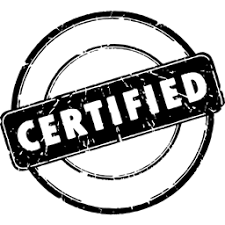 Effectively presenting your research is as crucial as the research itself. A well-structured and professionally formatted management studies project not only showcases your research aptitude but also amplifies its impact and readability. We will help you navigate through a systematic step-by-step approach to ensure your project stands out. The process initiates with understanding the specific guidelines provided by your institution or instructor. Clarity on formatting style, page layout, and font requirements is essential. Choosing an appropriate formatting style, like APA, MLA, Chicago, or Harvard, comes next. This choice dictates the rules for citations, headings, and references. Establishing a coherent document structure, including a title page, abstract, table of contents, and more, follows suit. Formatting the title page, writing an informative abstract, and creating a detailed table of contents are crucial steps in crafting an organized document. Incorporating lists of figures and tables enhances accessibility. Properly structuring headings, employing suitable fonts and spacing, and integrating accurate in-text citations are significant elements. Finally, compiling a detailed reference list and conducting a thorough review and revision completes the formatting process.
Effectively presenting your research is as crucial as the research itself. A well-structured and professionally formatted management studies project not only showcases your research aptitude but also amplifies its impact and readability. We will help you navigate through a systematic step-by-step approach to ensure your project stands out. The process initiates with understanding the specific guidelines provided by your institution or instructor. Clarity on formatting style, page layout, and font requirements is essential. Choosing an appropriate formatting style, like APA, MLA, Chicago, or Harvard, comes next. This choice dictates the rules for citations, headings, and references. Establishing a coherent document structure, including a title page, abstract, table of contents, and more, follows suit. Formatting the title page, writing an informative abstract, and creating a detailed table of contents are crucial steps in crafting an organized document. Incorporating lists of figures and tables enhances accessibility. Properly structuring headings, employing suitable fonts and spacing, and integrating accurate in-text citations are significant elements. Finally, compiling a detailed reference list and conducting a thorough review and revision completes the formatting process.
Step-by-Step Guide to Formatting a Research Project
- Understand the Guidelines: The first and foremost step in formatting your project is to thoroughly review and understand the guidelines provided by your institution, department, or instructor. These guidelines often encompass specific requirements regarding formatting style, page margins, font size, line spacing, and other important aspects. Adhering to these guidelines is crucial to meet the expectations of your evaluators. Understanding the guidelines also involves being aware of any particular preferences or deviations from standard formatting styles that your institution may have. It might encompass aspects like how to present tables, figures, equations, or special formatting for appendices.
- Choose the Appropriate Formatting Style: Depending on your institution's guidelines, you may be required to use a particular formatting style, such as APA (American Psychological Association), MLA (Modern Language Association), Chicago, or Harvard. Ensure that you have a clear understanding of the chosen style and follow its guidelines meticulously throughout your project. For instance, the APA style has specific rules for headings, citations, references, and more. Being well-versed in the chosen style is vital to ensure uniformity and compliance with academic standards.
- Set Up Document Structure: Begin by setting up the basic structure of your document. This typically includes the title page, abstract, table of contents, list of figures and tables (if applicable), introduction, literature review, methodology, findings, discussion, conclusion, references, and appendices. Each section should be clearly labeled and organized in a logical sequence. The document structure should flow smoothly, guiding the reader through the project seamlessly. Headings and subheadings should be appropriately nested to reflect the hierarchy of the content and ease navigation.
- Format Title Page: The title page is the first page of your project and should include the title of your study, your name, institutional affiliation, instructor's name, and submission date. Our expert who offers management studies research project formatting help can assist you in arranging this information according to the formatting style you are using. They will also ensure that the title is informative yet concise, reflecting the essence of your research. Proper alignment and font style contribute to the professional appearance of the title page.
- Write an Informative Abstract: The abstract provides a concise summary of your research project, including the research objectives, methods, results, and conclusion. Follow the guidelines of your chosen formatting style to structure and format the abstract correctly. An effective abstract should encapsulate the essence of your research, enabling readers to grasp the core message and purpose of the study without delving into the entire document.
- Create a Detailed Table of Contents: Generate a table of contents that accurately lists all the sections and sub-sections of your project, along with their respective page numbers. This helps readers navigate through your document easily. A well-structured table of contents provides a roadmap to your project, offering a clear overview of the document's organization and content.
- Include List of Figures and Tables: If your project contains figures and tables, create a list that enumerates them with their corresponding page numbers. Ensure proper formatting of this section according to the chosen style. The list of figures and tables aids in quick reference to visual elements within your research, enhancing the accessibility and readability of your project.
- Structure and Format Headings: Utilize consistent formatting for headings and subheadings throughout your project. This includes font size, font style, alignment, and hierarchy. Properly labeled headings enhance the readability and organization of your document. Clear and appropriately formatted headings guide the reader through the different sections of your research, creating a structured and logical flow of information.
- Apply appropriate Font and Spacing: Adhere to the specified font style and size outlined in the formatting guidelines. Typically, a standard font such as Times New Roman or Arial in 12-point size is recommended. Ensure consistent line spacing, usually double-spaced, throughout the document. The choice of font and spacing is essential for readability and a professional appearance of the document. Consistency in these aspects is paramount.
- Incorporate In-text Citations: Integrate in-text citations following the rules of the selected formatting style. Provide proper credit to the sources you have referred to in your research. Accurate and appropriate in-text citations lend credibility to your research by acknowledging the sources that have contributed to your work.
- Compile a Detailed Reference List: Create a comprehensive list of all the references you have cited in your project. Follow the formatting style's guidelines for organizing this list, including proper citation structure, alphabetical order, and indentation. A meticulously compiled and correctly formatted reference list demonstrates your academic rigor and adherence to scholarly standards in citing external sources.
- Review and Revise: Before finalizing your project, thoroughly review the entire document to ensure proper formatting, accurate citations, consistent styling, and adherence to guidelines. Make necessary revisions to eliminate errors and enhance the overall presentation. A final review and revision ensure that your project meets the prescribed formatting requirements, leaving a positive impression on evaluators.
By following these step-by-step guidelines for formatting a research project, you can present your work in a professional and organized manner. We are here to assist you in achieving excellence in your research projects through meticulous formatting and structuring. Feel free to reach out for any further assistance or guidance on your academic endeavors.
Help to Format a Research Project on Management Studies
 Crafting a research project is a significant academic endeavor, and presenting it in a clear, organized, and professional manner is equally crucial. The format of your project is the face it presents to the academic world, showcasing your dedication and expertise. At Petrian Editing Service, we understand the importance of a well-structured project and the impact it can have on your academic success. We will walk you through the standard format of a project, ensuring that you understand the essential elements that contribute to a polished and coherent document. Moreover, we'll highlight the benefits of seeking our help with formatting a project for management studies research, emphasizing how our expertise and efficiency can aid you in presenting your research in the best possible light. Additionally, we'll explore the decision-making process behind choosing the appropriate formatting style for your project, empowering you to make informed choices that align with academic standards and your specific needs. Let's delve into this journey of transforming your research into a professionally formatted project that stands out amidst academic scrutiny and contributes meaningfully to your field of study.
Crafting a research project is a significant academic endeavor, and presenting it in a clear, organized, and professional manner is equally crucial. The format of your project is the face it presents to the academic world, showcasing your dedication and expertise. At Petrian Editing Service, we understand the importance of a well-structured project and the impact it can have on your academic success. We will walk you through the standard format of a project, ensuring that you understand the essential elements that contribute to a polished and coherent document. Moreover, we'll highlight the benefits of seeking our help with formatting a project for management studies research, emphasizing how our expertise and efficiency can aid you in presenting your research in the best possible light. Additionally, we'll explore the decision-making process behind choosing the appropriate formatting style for your project, empowering you to make informed choices that align with academic standards and your specific needs. Let's delve into this journey of transforming your research into a professionally formatted project that stands out amidst academic scrutiny and contributes meaningfully to your field of study.
What is the standard format of a research project?
 The standard format of a project encompasses a structured approach aimed at presenting research in a clear and organized manner. The initial component is the title page, which serves as the project's cover, featuring the title of the study, the author's name, institutional affiliation, the instructor's details, and the submission date. Following this, the abstract provides a concise summary, summarizing the research's objectives, methods, results, and conclusion. To enhance navigability, the table of contents offers an organized list of all sections and subsections, accompanied by their respective page numbers. For projects integrating figures and tables, a list enumerating these elements with corresponding page numbers is included. The introduction section introduces the research problem, objectives, and scope of the study, setting the stage for the ensuing literature review, which critically analyzes existing relevant literature. The methodology section elaborates on the research methods and techniques utilized, ensuring transparency and replicability. The findings section presents the research results and accompanying data analysis, paving the way for the discussion section to provide an in-depth analysis and interpretation of the findings. A conclusive summary of the research and recommendations for future studies is presented in the conclusion. All sources referenced in the project are listed in the references section, adhering to a specific citation style. Lastly, any supplementary materials, data, or information that support the research but are not integrated into the main body of the project are included in the appendices, completing the standard format of a project.
The standard format of a project encompasses a structured approach aimed at presenting research in a clear and organized manner. The initial component is the title page, which serves as the project's cover, featuring the title of the study, the author's name, institutional affiliation, the instructor's details, and the submission date. Following this, the abstract provides a concise summary, summarizing the research's objectives, methods, results, and conclusion. To enhance navigability, the table of contents offers an organized list of all sections and subsections, accompanied by their respective page numbers. For projects integrating figures and tables, a list enumerating these elements with corresponding page numbers is included. The introduction section introduces the research problem, objectives, and scope of the study, setting the stage for the ensuing literature review, which critically analyzes existing relevant literature. The methodology section elaborates on the research methods and techniques utilized, ensuring transparency and replicability. The findings section presents the research results and accompanying data analysis, paving the way for the discussion section to provide an in-depth analysis and interpretation of the findings. A conclusive summary of the research and recommendations for future studies is presented in the conclusion. All sources referenced in the project are listed in the references section, adhering to a specific citation style. Lastly, any supplementary materials, data, or information that support the research but are not integrated into the main body of the project are included in the appendices, completing the standard format of a project.
Why seek our help with formatting a research project
- Expertise in Formatting Styles: We possess extensive knowledge and experience in various formatting styles, including APA, MLA, Chicago, and Harvard. Our experts can ensure your project adheres to the specific style guidelines, giving it a professional and scholarly look.
- Time-Efficient Process: Formatting can be time-consuming, especially if you're not familiar with the guidelines. Our experts can swiftly format your project, saving you valuable time to focus on your research and other academic responsibilities.
- Avoidance of Common Mistakes: Formatting errors can negatively impact the impression of your research. We can help you avoid common mistakes, ensuring your project is polished and error-free.
- Assistance Tailored to Your Needs: We customize the formatting to suit your project requirements and the guidelines of your institution or instructor, ensuring a tailored approach that meets your unique needs.
How do you decide which formatting style to use for your project?
- Institutional Guidelines: Refer to your institution's guidelines or your instructor's instructions. They often prescribe a preferred formatting style or provide guidelines on how to choose one.
- Discipline Standards: Consider the commonly accepted formatting style within the field of management studies. APA style is widely used in social sciences, including management studies.
- Journal or Publication Requirements: If you intend to publish your research, check the formatting style recommended or required by the target journal or publication. Adhering to their guidelines increases your chances of acceptance.
- Personal Familiarity: Choose a style you are familiar with or willing to learn. Comfort with a particular style can make the formatting process more efficient and effective.
Proper formatting enhances the professionalism and clarity of your project research in management studies. We are dedicated to assisting you in presenting your research in the best possible format. Reach out to us for assistance in formatting a research project and elevate your academic presentation.



